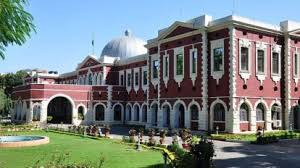One judge upholds death sentence, other acquits: Split ruling in Jharkhand HC on Maoist ambush that killed 6 cops

Ranchi, July 22, 2025 — In a significant and rare judicial development, the Jharkhand High Court has delivered a split verdict in the 2013 Maoist ambush case that claimed the lives of Pakur Superintendent of Police Amarjit Balihar and five other policemen. The judgment, handed down by a division bench, saw one judge uphold the death penalty for the two accused while the other judge ruled in favor of acquittal, citing insufficient evidence.
This unusual divergence in judicial opinion has reignited debate around the handling of evidence in terror-related cases and the complexities of capital punishment.
The Ambush That Shocked Jharkhand
On July 2, 2013, Maoist insurgents ambushed a police convoy near the Jamni crusher plant in Dumka district. The brutal attack resulted in the deaths of SP Amarjit Balihar and five police personnel: Rajiv Sharma, Manoj Hembram, Chandan Thapa, Ashok Srivastava, and Santosh Mandal. The convoy was returning from a meeting when it came under heavy gunfire, allegedly by a group of CPI(Maoist) cadres.
Two constables survived the attack and later became key witnesses during the trial.
Convictions and Appeals
Five years later, in September 2018, the Dumka District and Sessions Court convicted Pravir Murmu (alias Pravir Da) and Sanatan Baskey (alias Tala Da), both alleged Maoist operatives. The court handed down the death sentence to both, citing the heinous nature of the crime as fitting the “rarest of rare” category.
The convicts appealed the sentence in the Jharkhand High Court, where the case took a dramatic turn.
The Split Verdict: A Tale of Two Opinions
The division bench consisted of Justice Sanjay Prasad and Justice Rongon Mukhopadhyay. Their conclusions could not have been more different.
Justice Sanjay Prasad: Upholding the Death Sentence
Justice Prasad upheld the trial court’s decision, stating that the prosecution had convincingly proved the accused were responsible for the ambush. He cited:
- Eyewitness testimonies of surviving constables who identified the accused.
- The premeditated nature of the attack, including the use of heavy weapons.
- The targeting of senior police officers, which he said undermined the rule of law and constituted an “attack on the state.”
- The mutilation of bodies, which he considered indicative of the brutality and intent behind the attack.
He maintained that the incident met the threshold for the death penalty and confirmed the earlier sentence.
Justice Rongon Mukhopadhyay: Acquittal Due to Doubts
In stark contrast, Justice Mukhopadhyay raised serious concerns about the reliability of the prosecution’s evidence. He pointed out:
- The lack of independent corroboration of the eyewitness testimonies.
- Flaws in the Test Identification Parade (TIP) process, including inconsistencies in statements and alleged procedural lapses.
- The fact that the surviving witnesses were injured and unconscious during much of the incident, which raised doubts about their ability to accurately identify the attackers.
He concluded that the prosecution had failed to establish guilt beyond a reasonable doubt and acquitted both accused.
What Happens Next?
As per standard legal procedure, a split verdict on a capital punishment case requires the Chief Justice of the High Court to constitute a new bench to re-hear and resolve the matter. The final decision will hinge on this fresh judicial review, which could either uphold the death penalty, reduce it to life imprisonment, or result in acquittal.
Compensation Ordered for Victims’ Families
Regardless of the final verdict, Justice Prasad directed compensation for the victims’ families. His orders included:
- ₹2 crore and a government job (DSP or deputy collector level) for the widow of SP Amarjit Balihar.
- ₹50 lakh and Grade-IV government jobs for the families of each of the five other martyred policemen.
This gesture aims to provide some measure of relief and support to the families left behind by the tragedy.
Legal and Social Reactions
The verdict has drawn strong reactions from legal experts, civil society, and law enforcement agencies.
- Some praised the judicial caution shown by Justice Mukhopadhyay in emphasizing due process and evidentiary standards, especially in death penalty cases.
- Others applauded Justice Prasad for taking a strong stance against insurgency, noting that soft approaches might embolden extremist elements.
- Victims’ families expressed mixed emotions. While some welcomed the compensation order, others were disheartened by the possibility of acquittal.
Human rights groups have reiterated the importance of ensuring fair trials, even in cases involving anti-national activities, citing past instances where individuals were wrongfully convicted.
Broader Implications
This split verdict brings to the forefront key issues in India’s criminal justice system:
- The challenges of prosecuting insurgency cases in remote areas.
- The risk of misidentification and procedural errors in emotionally charged trials.
- The question of whether the death penalty serves justice or compounds injustice.
It also underscores the balancing act judges must perform—delivering justice while safeguarding the rights of the accused.
Conclusion
As the case heads for re-evaluation by a new bench, it stands as a test of India’s judicial resolve and procedural integrity. The outcome will not only determine the fate of the two accused but will also set a precedent for how courts address complex cases involving terrorism, public trust, and capital punishment.






